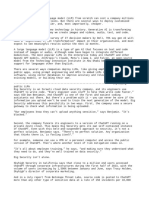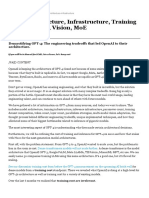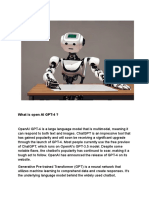0% found this document useful (0 votes)
19 views28 pagesLLMs in Python Free Course by Inder P Singh
The document is a comprehensive guide on using Large Language Models (LLMs) in Python, covering setup, installation, and practical applications such as inference, API integration, and local deployment. It emphasizes Python's advantages in AI development, including its rich libraries and community support, while providing quizzes for knowledge assessment. Key topics include prompt engineering, fine-tuning, and best practices for efficient model usage.
Uploaded by
Bipul MondalCopyright
© © All Rights Reserved
We take content rights seriously. If you suspect this is your content, claim it here.
Available Formats
Download as PDF, TXT or read online on Scribd
0% found this document useful (0 votes)
19 views28 pagesLLMs in Python Free Course by Inder P Singh
The document is a comprehensive guide on using Large Language Models (LLMs) in Python, covering setup, installation, and practical applications such as inference, API integration, and local deployment. It emphasizes Python's advantages in AI development, including its rich libraries and community support, while providing quizzes for knowledge assessment. Key topics include prompt engineering, fine-tuning, and best practices for efficient model usage.
Uploaded by
Bipul MondalCopyright
© © All Rights Reserved
We take content rights seriously. If you suspect this is your content, claim it here.
Available Formats
Download as PDF, TXT or read online on Scribd
/ 28























































































